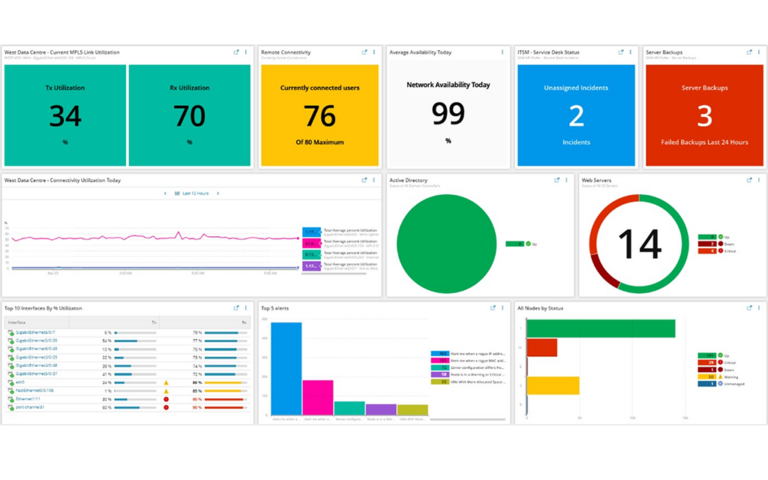SolarWinds introduced Hybrid Cloud Observability, a platform for insight into on-premises networks, clouds, databases and apps.
Observability solutions use logs and metrics to provide insight into systems. Most vendors and manufacturers integrate some form of observability into their products. Think of a cloud platform for access points, or a laptop application for system information. Such insight is always welcome, but not enough.
Nowadays, we work with various vendors, devices and applications, spread across multiple networks and clouds. Operations departments seek insight into distributed environments. That’s why SolarWinds is launching Hybrid Cloud Observability.
SolarWinds Hybrid Cloud Observability
The solution allows organizations to monitor the network devices and applications of a hybrid cloud environment, independent of brands and vendors. Network devices and applications can be connected in multiple ways: agents, agentless and APIs. The solution supports most major cloud providers, including AWS, Microsoft and Google. After deploying Hybrid Cloud Observability in a supported cloud environment, the solution understands the hierarchy and dependencies of the cloud.
This brings us to an important topic. Hybrid Cloud Observability goes beyond monitoring. As mentioned before, Observability solutions typically provide insight into system statuses. A status can be communicated in several ways. For instance: a large, red signal that starts flashing as soon as a system stops exchanging data. The latter isn’t always helpful. A user learns that the system no longer works, but has no insight into the cause.
Hybrid Cloud Observability does things differently. The solution focuses on context. The status of applications and network devices isn’t addressed with red or green signals, but detailed performance stats. A user doesn’t learn whether a system works, but how a system works. This insight helps in fine-tuning all applications and devices that make up an infrastructure.
Licences
The platform is available in two forms: Observability Essentials and Observability Advanced. The monthly costs are billed per node. Essentials, the least expensive option, allows the monitoring of network devices, apps and workloads. Advanced supports virtualized systems as well.
Tip: Cato Networks makes BrandLoyalty’s WAN fast, transparent and secure
